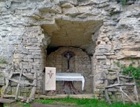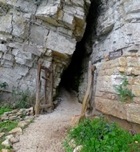

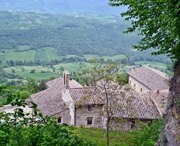
This was the site of a tiny oratory dedicated to St Silvester, which seems to have belonged to the Abbazia di San Benedetto in Fundis at Stroncone in the 10th century. St Francis is said to have stayed in a “speco” (grotto) here in 1213, soon after his conversion, and to have established a small Franciscan community on the site. (According to tradition, Bishop Ugolino (1208-20) called St Francis to Narni at this time and the saint established a second oratory on what was to become the site of San Francesco).
St Bernardino of Siena revived the convent in the 15th century, and it subsequently became an important centre for the Observant reform.
The convent closed in 1916 but reopened in 1942.
Hours of opening are given in this page in Assisiofm.org.
Lower Convent
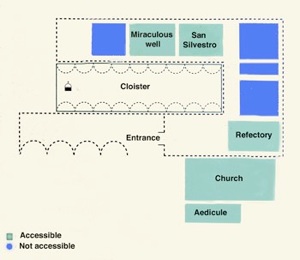
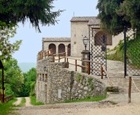
-
✴the Edicola di San Francesco; and
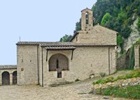
-
✴the adjacent church (see below);
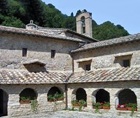
From here, you can visit:
-
✴the refectory of St Bernardino;
-
✴the Cappellina di San Silvestro; and
-
✴the room containing the miraculous well.
Church (16th century)
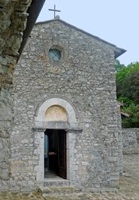
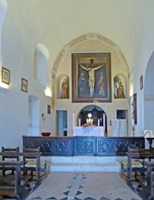
The church is in the form of a simple rectangle with a wall dividing the public part from the friars’ choir.
Refectory (15th century)
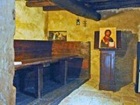
Cappellina di San Silvestro (10th century)
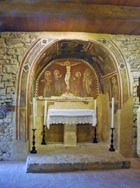
This chapel, which was adapted from the original oratory here, was used for the friars devotions until at least the 16th century. In 1907, a visitor documented the fact that the friars used the chapel for woodwork, and that its apse was protected by a screen.
Frescoes (14th century)
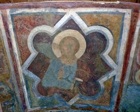
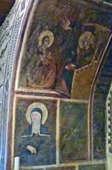
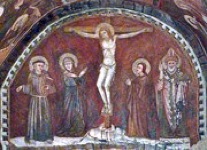
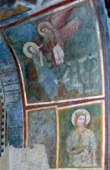
The frescoes in the niche behind the altar, which were restored in 2004, depict:
-
✴the Crucifixion with the Virgin and St John the Evangelist, flanked by SS Francis and Sylvester; and
-
✴under the arch:
-
•to the left:
-
-the Annunciation; and
-
-St Clare;
-
•above, Christ the Redeemer; and
-
•to the right:
-
-an angel giving Communion to St Jerome; and
-
-St Elizabeth of Hungary.
An inscription under the Communion of St Jerome records that it was commissioned by “ROMANUSTIC...ELLI”.
Miraculous Well
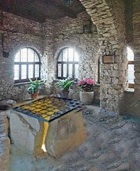
Upper Convent
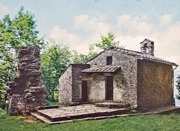
A stepped path up through the trees, with aedicules marking the stations of the cross, leads to the upper convent, which comprises:
-
✴a tiny chapel (also illustrated above), with frescoes on the walls depicting the miracle of water transformed into wine;
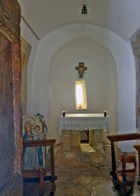
-
✴a column surmounted by a cross to the left of it, which marks the place where (according to the Chronicles of Angelo Clareno) an angel comforted St Francis in a moment of melancholy by revealing to him “the privileges or unique favours granted by God in Heaven to those who love and observe the [Franciscan] Rule purely to the very end”; and
-
✴a single cell, now a chapel, to the right, in which St Bernardino is said to have celebrated Mass.
